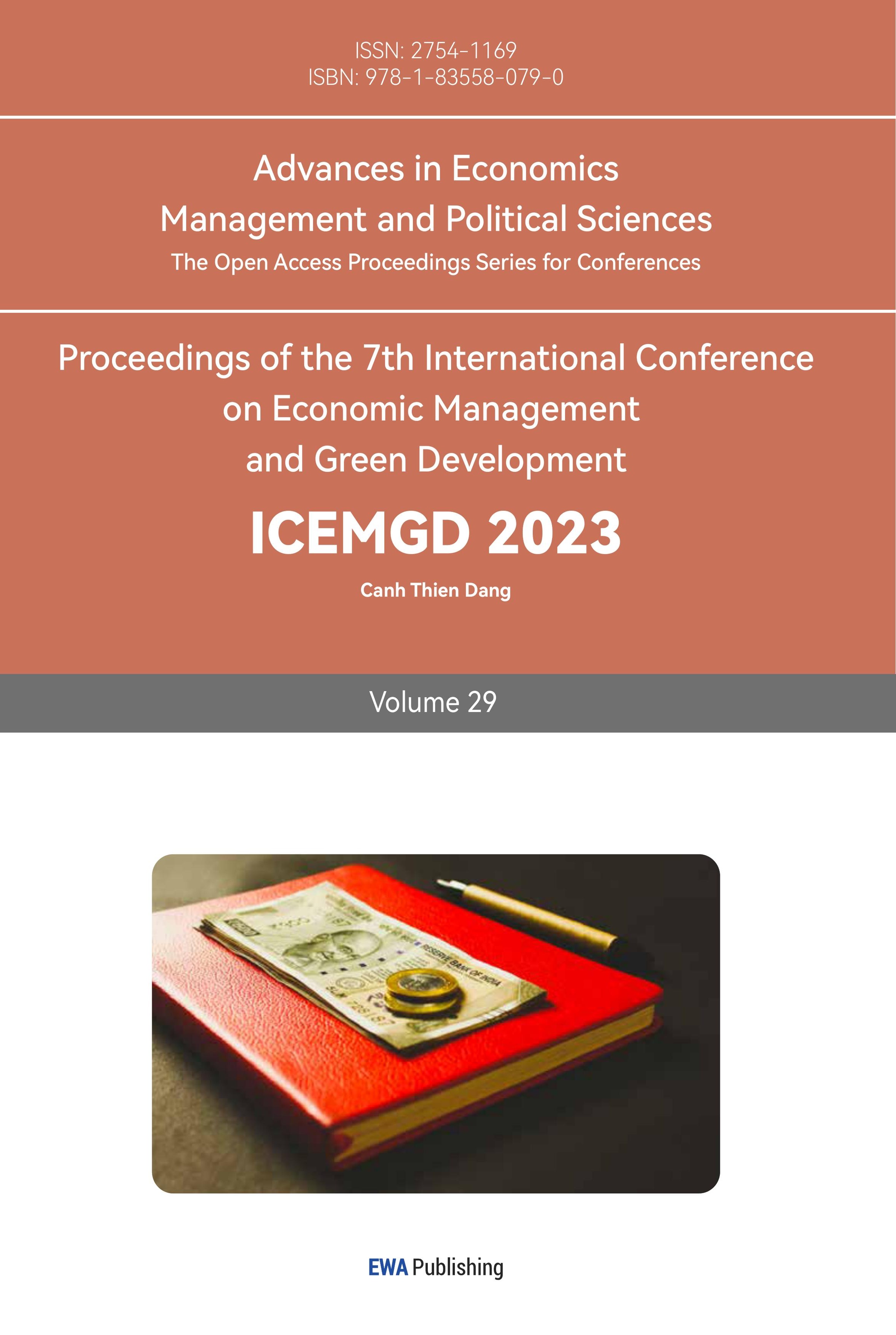References
[1]. Swearingen, K., & Sinha, R. (2002, June). Interaction design for recommender systems. In Designing Interactive Systems (Vol. 6, No. 12, pp. 312-334). New York: ACM Press.
[2]. Freeman, L. C. (2017). Research methods in social network analysis. Routledge.
[3]. Fishbein, M., & Ajzen, I. (1977). Belief, attitude, intention, and behavior: An introduction to theory and research.
[4]. Bandura, A., & Walters, R. H. (1977). Social learning theory (Vol. 1). Prentice Hall: Englewood cliffs.
[5]. Roy Dholakia, R., & Uusitalo, O. (2002). Switching to electronic stores: consumer characteristics and the perception of shopping benefits. International Journal of Retail & Distribution Management, 30(10), 459-469.
[6]. Zong Yi & Tian Rong. (2023). Research on the Influence of Information Anchors on Consumers' Online Shopping Intention. Journal of Tianjin Commercial University (01), 39-45. doi:10.15963/j.cnki.cn12-1401/f.2023.01 .006.
[7]. Chu, J., Chintagunta, P., & Cebollada, J. (2008). Research note—A comparison of within-household price sensitivity across online and offline channels. Marketing science, 27(2), 283-299.
[8]. Chen, G. C., & Faz De Los Santos, P. X. (2015). The potential of digital data: far can it advance financial inclusion? (No. 95202, pp. 1-4). The World Bank.
[9]. Lin, J. C. C. (2007). Online stickiness: its antecedents and effect on purchasing intention. Behaviour & information technology, 26(6), 507-516.
[10]. Wald, A. (1943). A method of estimating plane vulnerability based on damage of survivors. Statistical Research Group, Columbia University. CRC, 432.
[11]. Luo Zhe. (2019). Research on the Impact of Personalized Recommendation System on Consumer Purchase Behavior of E-commerce Platform (Master's Thesis, Shaanxi Normal University https://kns.cnki.net/KCMS/detail/detail.aspx?dbname=CMFD202001&filename=1020003103.nh).
Cite this article
Wang,G. (2023). The Application of Social Networks in the Marketing. Advances in Economics, Management and Political Sciences,29,226-234.
Data availability
The datasets used and/or analyzed during the current study will be available from the authors upon reasonable request.
Disclaimer/Publisher's Note
The statements, opinions and data contained in all publications are solely those of the individual author(s) and contributor(s) and not of EWA Publishing and/or the editor(s). EWA Publishing and/or the editor(s) disclaim responsibility for any injury to people or property resulting from any ideas, methods, instructions or products referred to in the content.
About volume
Volume title: Proceedings of the 7th International Conference on Economic Management and Green Development
© 2024 by the author(s). Licensee EWA Publishing, Oxford, UK. This article is an open access article distributed under the terms and
conditions of the Creative Commons Attribution (CC BY) license. Authors who
publish this series agree to the following terms:
1. Authors retain copyright and grant the series right of first publication with the work simultaneously licensed under a Creative Commons
Attribution License that allows others to share the work with an acknowledgment of the work's authorship and initial publication in this
series.
2. Authors are able to enter into separate, additional contractual arrangements for the non-exclusive distribution of the series's published
version of the work (e.g., post it to an institutional repository or publish it in a book), with an acknowledgment of its initial
publication in this series.
3. Authors are permitted and encouraged to post their work online (e.g., in institutional repositories or on their website) prior to and
during the submission process, as it can lead to productive exchanges, as well as earlier and greater citation of published work (See
Open access policy for details).
References
[1]. Swearingen, K., & Sinha, R. (2002, June). Interaction design for recommender systems. In Designing Interactive Systems (Vol. 6, No. 12, pp. 312-334). New York: ACM Press.
[2]. Freeman, L. C. (2017). Research methods in social network analysis. Routledge.
[3]. Fishbein, M., & Ajzen, I. (1977). Belief, attitude, intention, and behavior: An introduction to theory and research.
[4]. Bandura, A., & Walters, R. H. (1977). Social learning theory (Vol. 1). Prentice Hall: Englewood cliffs.
[5]. Roy Dholakia, R., & Uusitalo, O. (2002). Switching to electronic stores: consumer characteristics and the perception of shopping benefits. International Journal of Retail & Distribution Management, 30(10), 459-469.
[6]. Zong Yi & Tian Rong. (2023). Research on the Influence of Information Anchors on Consumers' Online Shopping Intention. Journal of Tianjin Commercial University (01), 39-45. doi:10.15963/j.cnki.cn12-1401/f.2023.01 .006.
[7]. Chu, J., Chintagunta, P., & Cebollada, J. (2008). Research note—A comparison of within-household price sensitivity across online and offline channels. Marketing science, 27(2), 283-299.
[8]. Chen, G. C., & Faz De Los Santos, P. X. (2015). The potential of digital data: far can it advance financial inclusion? (No. 95202, pp. 1-4). The World Bank.
[9]. Lin, J. C. C. (2007). Online stickiness: its antecedents and effect on purchasing intention. Behaviour & information technology, 26(6), 507-516.
[10]. Wald, A. (1943). A method of estimating plane vulnerability based on damage of survivors. Statistical Research Group, Columbia University. CRC, 432.
[11]. Luo Zhe. (2019). Research on the Impact of Personalized Recommendation System on Consumer Purchase Behavior of E-commerce Platform (Master's Thesis, Shaanxi Normal University https://kns.cnki.net/KCMS/detail/detail.aspx?dbname=CMFD202001&filename=1020003103.nh).









